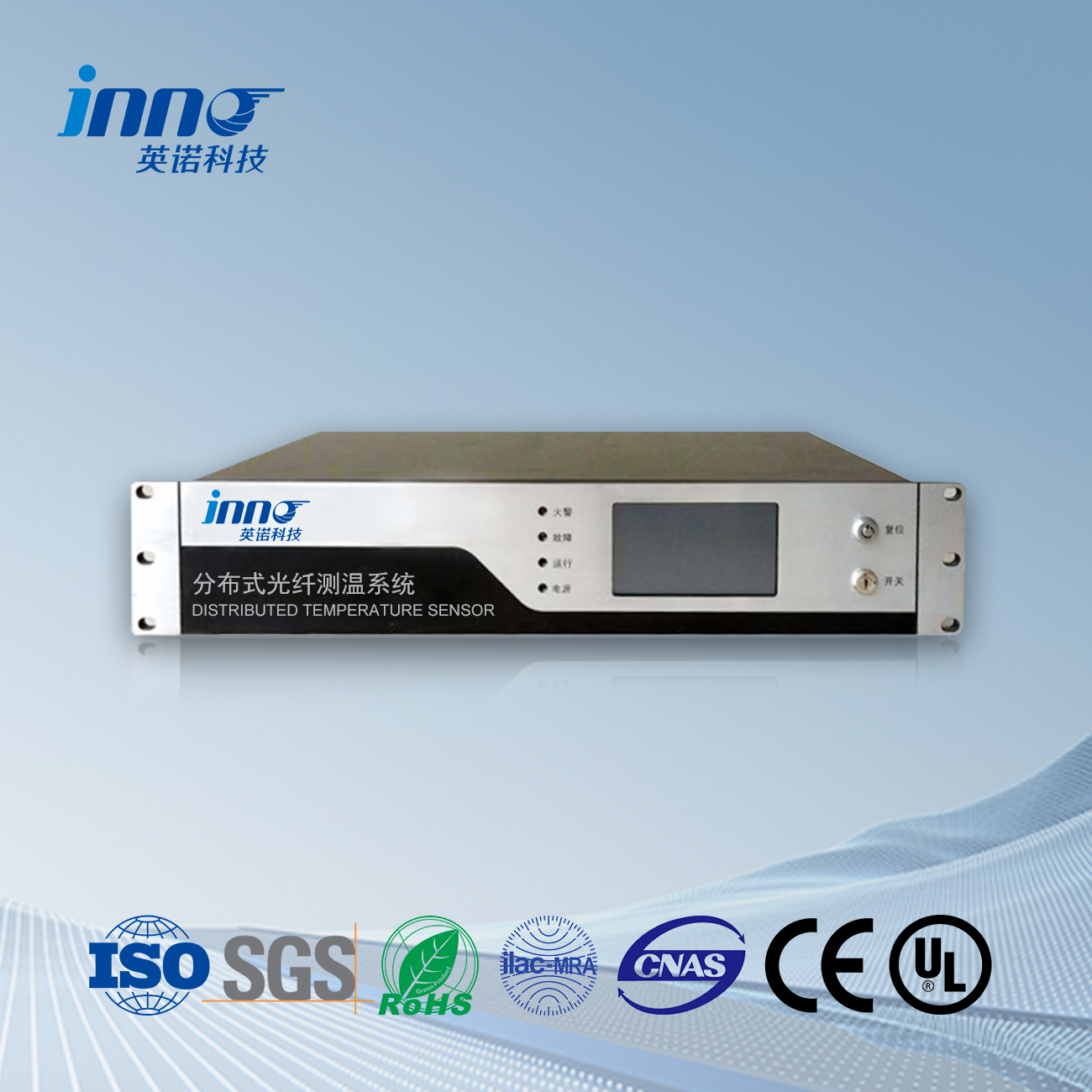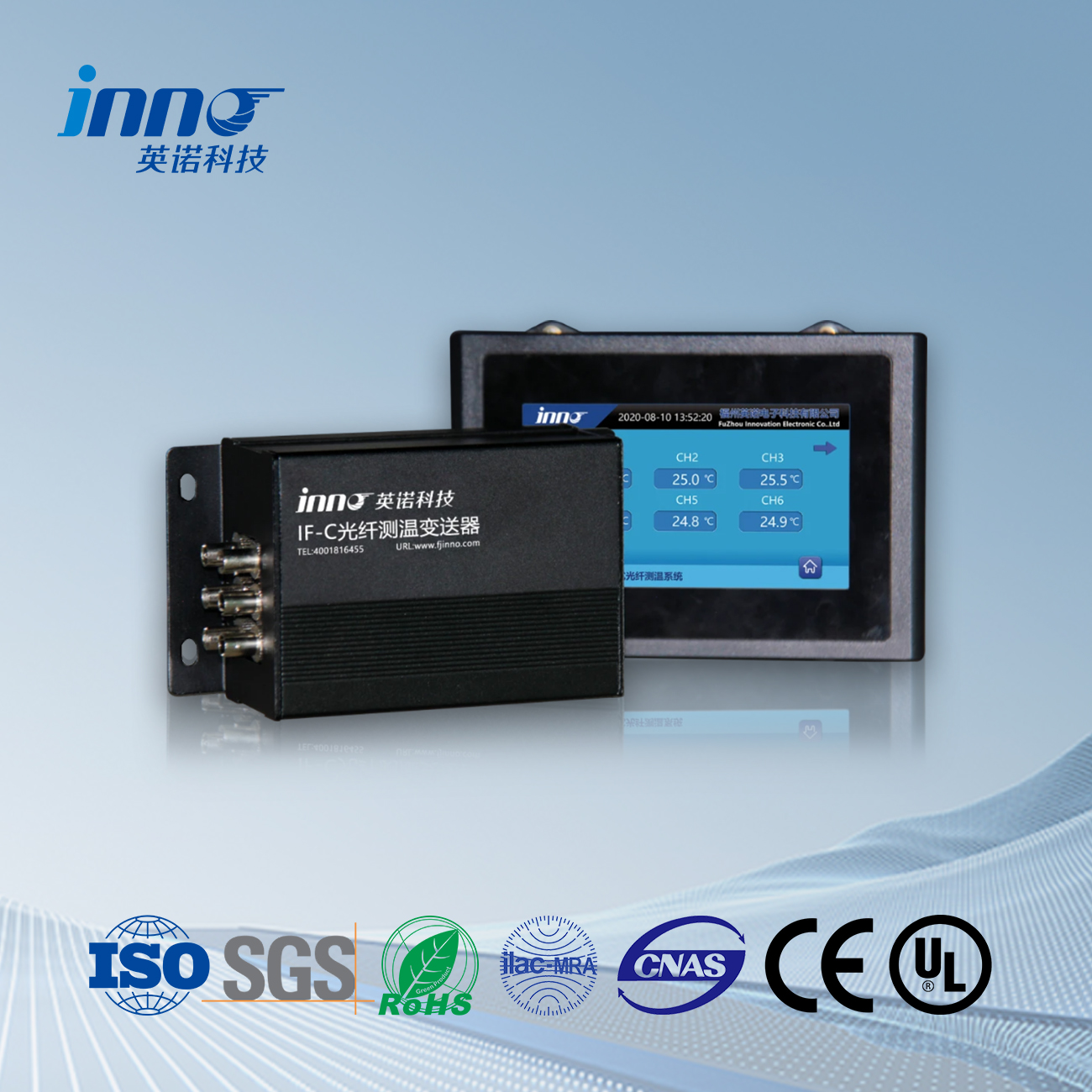Ever wondered how operators detect pipeline leaks miles away without a single camera? Or how utility companies know exactly where that underground cable fault is without digging up the entire street? The answer lies in one of the most revolutionary technologies of our time: distributed fiber optic sensing (DFOS).

I’ve spent years working with infrastructure monitoring systems, and I can tell you that nothing has transformed the industry quite like distributed optical fiber sensors. They’re essentially turning ordinary fiber cables into thousands of ultra-sensitive virtual sensors that can detect temperature, 거르다, 진동, and acoustic changes along entire infrastructures.
Let’s dive into this fascinating technology that’s quietly safeguarding our critical infrastructure.
What Exactly Is Distributed Fiber Optic Sensing?
At its core, 분산형 광섬유 sensing uses standard optical fibers to detect changes in the surrounding environment. Unlike traditional point sensors that measure at specific locations, distributed sensing turns the entire length of fiber into a continuous sensing line.
Think of it as having thousands of sensors packed into a single cable that can stretch for tens or even hundreds of kilometers. Pretty amazing, right?
The technology works by analyzing changes in light properties as they travel through the fiber. When external factors like temperature, 거르다, or vibration affect the fiber, they cause tiny changes in how light scatters back to the monitoring unit. Special interrogators then interpret these changes to pinpoint exactly what’s happening and where.
Main Types of Distributed Fiber Optic Sensing Systems
Not all distributed sensing systems are created equal. The technology broadly falls into these main categories:
1. 분산 온도 감지 (디티에스(DTS))
DTS systems measure temperature variations along the entire fiber length. They’re perfect for monitoring pipeline temperature profiles, detecting hot spots in power cables, and identifying leaks that cause temperature changes. I’ve seen these systems detect temperature changes as small as 0.1°C over distances of 30+ 킬로미터!
2. 분산 음향 감지 (증권 시세 표시기)
If you need to detect vibrations or sounds, DAS is your go-to technology. These systems can identify third-party interference near pipelines, detect unauthorized access along perimeters, and even monitor traffic flows. The fiber essentially becomes one long microphone that can distinguish between a backhoe digging, a vehicle moving, or someone walking nearby.
3. Distributed Strain Sensing (DSS)
When structural integrity is your concern, DSS systems shine by measuring mechanical strain along the fiber. They’re increasingly used for monitoring ground movements, structural health of bridges, and pipeline deformation. One project I worked on used DSS to monitor a 120-mile pipeline crossing active fault zones!
4. Distributed Vibration Sensing (증권 시세 표시기)
DVS systems are specialized in detecting and analyzing vibrations along the fiber optic cable. They offer exceptional sensitivity to mechanical disturbances, making them ideal for perimeter security, pipeline monitoring, and infrastructure protection. Using advanced 신호 처리, DVS can distinguish between different types of vibrations – from the subtle footsteps of an intruder to the distinctive vibration pattern of excavation equipment near a buried pipeline.
5. Hybrid Sensing Systems
The latest technology combines multiple sensing techniques in one system. 예를 들어, some advanced systems from FJINNO can simultaneously monitor temperature, 거르다, and acoustic signals using a single fiber cable, giving you comprehensive monitoring capabilities with minimal installation requirements.
How to Choose the Right Distributed Fiber Optic Sensing Solution
Selecting the right system can be overwhelming, especially with so many options available. Here’s my practical advice for making the right choice:
Assess Your Primary Monitoring Need
Start by clarifying what you most need to detect: 온도 변화, vibrations, 거르다, or a combination of these. This will narrow your options considerably.
For pipeline operators concerned with leak detection, DTS or hybrid systems typically offer the best solution. For perimeter security, DAS systems tend to provide superior results. If you’re monitoring infrastructure stability, DSS should be your focus.
Consider Your Distance Requirements
Different systems offer varying monitoring ranges. Some budget systems might only cover 5-10km, while high-end interrogators can monitor 100km+. Be realistic about your current and future distance needs.
Evaluate Spatial Resolution Needs
This refers to how precisely the system can locate an event. If you’re monitoring critical infrastructure where pinpoint accuracy matters, you’ll need higher spatial resolution (which typically costs more). For general trend monitoring over long distances, you might accept lower resolution to reduce costs.
Think About Integration Requirements
Will your distributed sensing system need to integrate with existing SCADA systems or control rooms? Make sure the solution you choose offers compatible communication protocols and alarm management features.
맨 위로 5 Distributed Fiber Optic Sensing Solutions Worth Considering
After testing dozens of systems over the years, here are my top recommendations for various applications:
1. FJINNO PipeGuard DTS System
Highlight: Industry-leading temperature sensitivity with multi-zone alarm capability
Key Advantages:
- Exceptional 0.1°C temperature resolution with ±1m spatial accuracy
- Monitoring range up to 70km with a single unit
- User-friendly interface with intuitive zone-based alarm configuration
- Ruggedized design for harsh field environments
Ideal Users: Oil and gas pipeline operators, power cable monitoring teams, and industrial process monitoring applications. We’ve seen great success with this system in desert environments where temperature extremes challenge other solutions.
2. FJINNO PerimeterWatch DAS System
Highlight: Advanced pattern recognition algorithms for superior threat detection
Key Advantages:
- AI-powered event classification with 97% accuracy rate
- Industry-leading false alarm suppression
- Seamless integration with CCTV and security management systems
- User-defined detection zones with customizable sensitivity
Ideal Users: Critical infrastructure security teams, border security operations, and high-value asset protection. This system has been successfully deployed around several national security facilities where reliability is non-negotiable.
3. FJINNO VibraSense DVS System
Highlight: Precision vibration monitoring with advanced pattern recognition for perimeter and pipeline applications
Key Advantages:
- Ultra-sensitive vibration detection with 1-meter localization accuracy
- Sophisticated algorithm differentiating between natural and human-caused disturbances
- Real-time threat classification (walking, digging, vehicle movement)
- Extended monitoring range up to 50km per single interrogator unit
Ideal Users: The VibraSense DVS system excels in two critical application areas:
Perimeter Security Applications: For critical infrastructure like power stations, water reservoirs, and military facilities, the VibraSense creates an invisible detection zone around your entire perimeter. Unlike traditional security systems that require cameras, sensors, and power at regular intervals, a single VibraSense unit can monitor a 50km perimeter with no blind spots. The system distinguishes between benign events (animals, weather) and genuine threats (intruders climbing fences, vehicles approaching restricted areas), dramatically reducing false alarms while ensuring no security breach goes undetected.
Pipeline Monitoring Applications: For oil, 기체, and water pipeline operators, the VibraSense system detects early signs of potential pipeline threats. It can identify unauthorized excavation activities near buried pipelines, illegal hot-tapping attempts, and even subtle leakage vibrations before they become major breaches. I’ve witnessed this system detect a contractor digging 20 meters from a critical pipeline, allowing operators to dispatch security before any damage occurred. The system’s ability to classify different types of threats enables appropriate response prioritization across vast pipeline networks.
Critical Considerations When Purchasing Distributed Fiber Optic Sensing Systems
Beyond the technical specifications, here are some practical considerations based on my experience:
Installation Requirements
Some systems require specialized installation techniques, particularly for strain sensing. Consider whether you have access to qualified installation contractors or need training for your team. The best technology in the world won’t help if it’s improperly installed.
Maintenance and Calibration Needs
How often does the system require calibration? What maintenance is needed? Some systems require annual calibration while others can operate for 3+ years without intervention. This significantly impacts your total cost of ownership.
Software Usability and Updates
The interrogator hardware is only half the equation. Evaluate the software interface, reporting capabilities, and update policy. I’ve seen organizations struggle with powerful systems that have nearly unusable interfaces.
Environmental Constraints
Will your system operate in extreme temperatures, high humidity, or hazardous locations? Verify that the equipment is rated appropriately. FJINNO systems have consistently performed well in challenging environments, from desert pipelines to arctic installations.
Vendor Support and Longevity
Distributed sensing is a long-term investment. Evaluate the manufacturer’s track record, support capabilities, and financial stability. You want a partner who’ll be there five years from now when you need assistance.
Frequently Asked Questions About Distributed Fiber Optic Sensing
How does distributed fiber optic sensing differ from traditional monitoring methods?
Unlike conventional point sensors that measure at discrete locations, distributed sensing turns the entire fiber optic cable into a continuous sensor. This provides thousands of measurement points along the entire asset without the need for power, electronics, or communication infrastructure at each point. The result is comprehensive coverage with significantly reduced installation and maintenance costs.
What’s the typical range for distributed fiber optic sensing systems?
Most commercial systems offer monitoring ranges between 10km and 100km from a single interrogator unit. High-performance systems from manufacturers like FJINNO can achieve ranges up to 100km while maintaining good spatial resolution. For longer distances, multiple interrogators can be networked together or signal amplification techniques can be employed.
Are special fibers required for distributed sensing?
It depends on the application. For basic temperature sensing, standard single-mode or multi-mode telecom fibers often suffice. For strain and acoustic sensing in demanding applications, specialized fibers with enhanced sensitivity or specialized coatings are typically recommended. FJINNO offers application-specific cables optimized for different sensing requirements.
How accurately can these systems locate events?
공간 해상도 (the ability to precisely locate an event) varies by technology and model. High-end DTS systems can achieve spatial resolutions of 0.5-1 미터, while top-tier DAS systems can pinpoint acoustic events within 1-5 meters over distances of 40+ 킬로미터. This level of precision allows operators to respond exactly where needed without wasting time searching large areas.
Can distributed sensing be retrofitted to existing infrastructure?
Yes, with certain limitations. For surface 온도 모니터링 of pipelines or conduits, fiber cables can be attached to the exterior. For perimeter security, fiber can be buried alongside existing boundaries. 그렇지만, for applications requiring internal temperature or strain measurements (like inside power cables or embedded in structures), installation during construction is typically necessary. FJINNO offers specialized solutions for both new installations and retrofits.
Conclusion: The Future of Infrastructure Monitoring Is Fiber-Based
Distributed fiber optic sensing represents a fundamental shift in how we monitor critical infrastructure. By converting simple fiber optic cables into thousands of virtual sensors, these systems provide unprecedented visibility into the condition and security of pipelines, power cables, perimeters, and structures.
For operators of critical infrastructure looking to enhance safety, 안전, and operational efficiency, investing in distributed fiber optic sensing is increasingly becoming not just an option but a necessity. With companies like FJINNO leading innovation in this space, the technology continues to become more capable, more affordable, and more accessible.
Whether you’re managing pipelines across challenging terrain, monitoring power cables in urban environments, or securing critical perimeters, there’s likely a distributed fiber optic sensing solution that can dramatically improve your operational awareness and preventive maintenance capabilities.
Ready to explore how distributed fiber optic sensing can transform your monitoring capabilities? Contact FJINNO’s experts for a consultation tailored to your specific infrastructure challenges.
광섬유 온도 센서, 지능형 모니터링 시스템, 중국에 분포된 광섬유 제조업체
 |
 |
 |
 INNO 광섬유 온도 센서 ,온도 모니터링 시스템.
INNO 광섬유 온도 센서 ,온도 모니터링 시스템.
